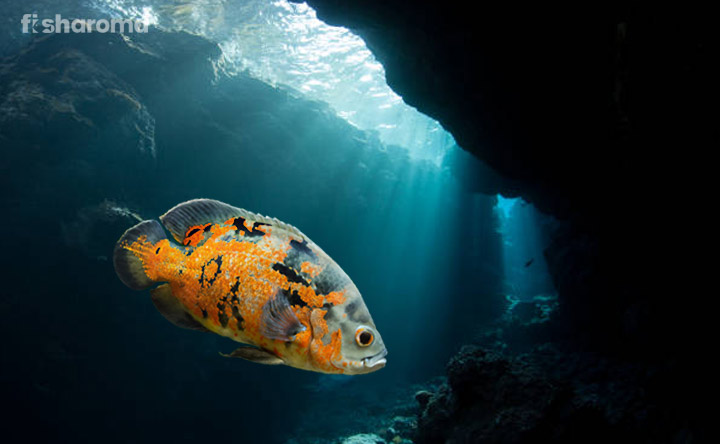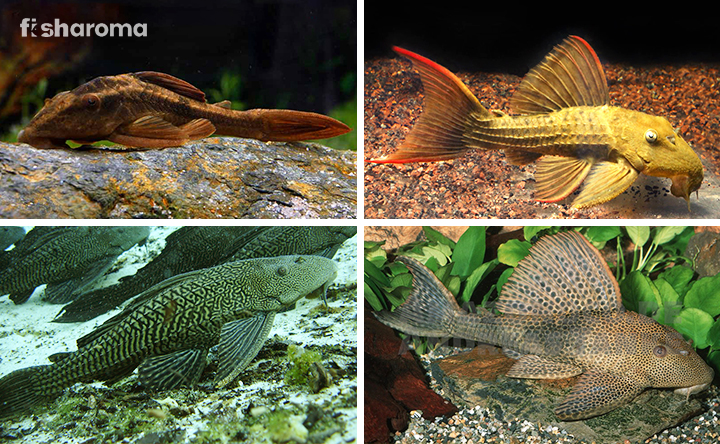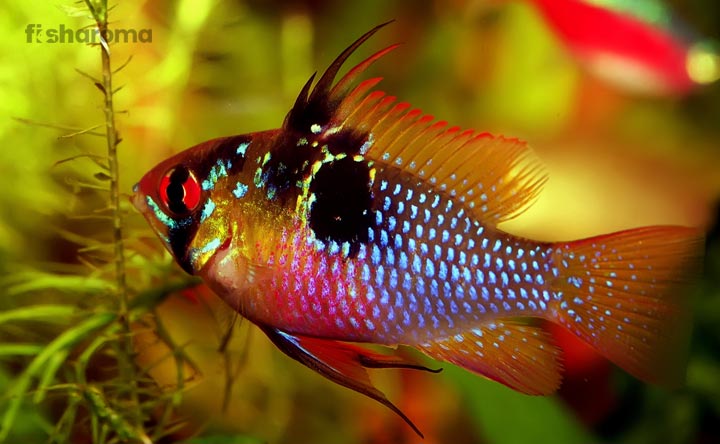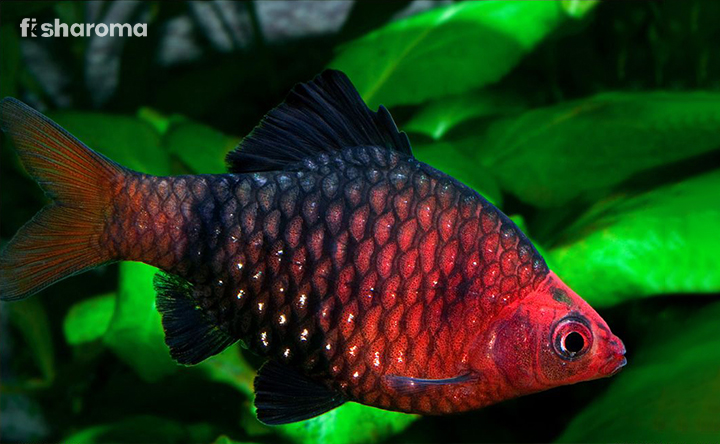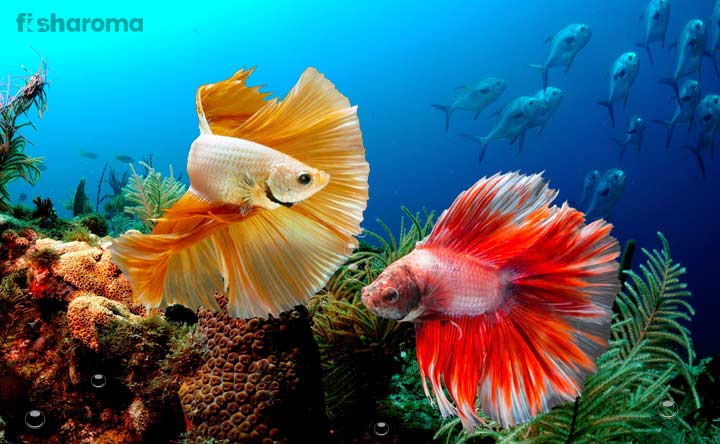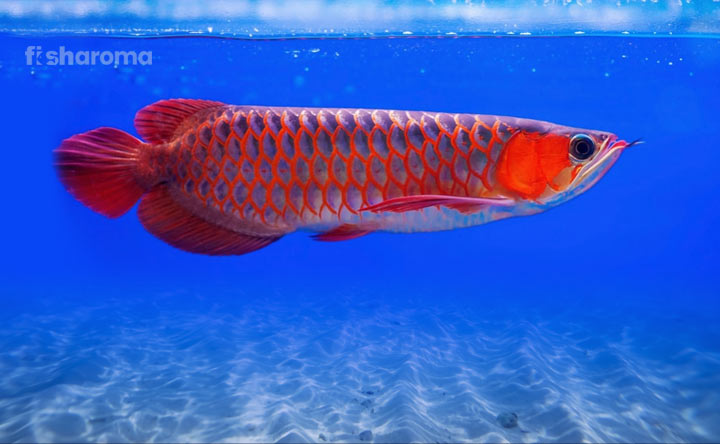The Complete Care Guide to Gulper Catfish
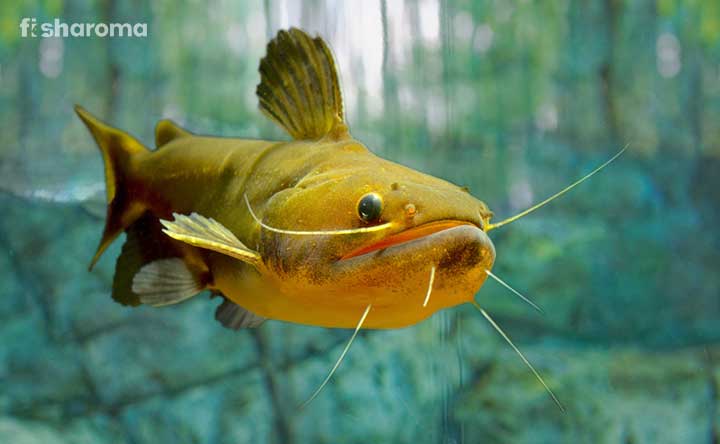
- Origin and Habitat of Gulper Catfish
- Appearance of Gulper Catfish
- Behaviour of Gulper Catfish
- Lifespan of Gulper Catfish
- Diet of Gulper Catfish
- Tank Requirements for Gulper Catfish
- Water Type for Gulper Catfish
- Compatibility of Gulper Catfish
- Breeding of Gulper Catfish
- Disease and Treatment of Gulper Catfish
- Summary
The Gulper Catfish is also known as Ogre Catfish and dwells in the freshwater tanks. With an oversized mouth, the Gulper Catfish looks very exotic. These fishes have relative low eyesight, for which they are adaptable to aquariums than any other freshwater ponds or marine life. However, in spite of this low eyesight, they are capable of preying on larger fish than themselves. We are here to discuss different ways through which these water-quality-sensitive fish can be taken the best care of.
Key Specifications of Gulper Catfish
We will discuss different aspects of the Gulper Catfish, but before that, let us go through some key specifications quickly.
| Scientific Name | Asterophysus batrachus |
| Origin | Wild Colombia, Orinoco Basins |
| Lifespan | 5-15 years |
| Colour | Grey, brown, orange and black |
| Temperament | Predator |
| Size | 9.8 inches |
| Diet | Carnivore |
| Family | Auchenipteridae |
| Compatibility | Aggressive to moderate |
| Tank Size | 70 gallons |
| Care Level | Easy |
Overview
Having the scientific name Asterophysus batrachus, Gulper Catfish comes from the family of Auchenipteridae and originates from Wild Colombia. The Gulper Catfish is never mistaken as any other species, and its smooth orange or brown body, with a classy appearance, would attract any fish lover.
Origin and Habitat of Gulper Catfish
The Gulper Catfish is found in South America and it dwells mainly in the basins of Rio Negro and Rio Orinoco. These fishes are not accustomed to any high-current water since they have a bulky structure and are more likely to dwell smoothly in slow-moving water. They prefer to remain in submerged water structures.
You must keep dense vegetation in their areas as it helps them to hide in there. While living in the wild basins, they prefer to dwell in deeper stretches of black water. Since they are accustomed to low light, you can use dim lighting while decorating their tanks at home.
Appearance of Gulper Catfish
The Gulper Catfish is of different colours like black, grey, brown and orange with a whitish belly, which is thick-set shaped and short in size. Extremely classy, they possess a down-turned or downward mouth along with whiskers.
The distention of their belly after meals is a significant character to look at. Among 3000 species of Catfish, this type has soft and velvety skin. Although they have low eyesight, their barbels ease their swimming. You need to keep them in soft substrates since they are scale-less and might get hurt through the hard surface.
They have relatively small fins along with dorsal and adipose fins, small pectoral fins, two pelvic fins, one anal fin and a large caudal fin.
Size
The average length of Gulper Catfish is 25 cm or 9.8 inches whereas, it can maximum grow to a length of11.2 inches.
Colour
The colour of Gulper Catfish is black, grey, brown and orange with a yellow tinge on them. Both females and males generally have the same colour, however, they can differ sometimes.
Behaviour of Gulper Catfish
Gulper Catfish are finicky eaters at first and gradually learn to adopt an aquarium environment that includes a protein-rich diet and pellets. They are strictly carnivorous and still, they manage to extract benefits from vegetables (which is discussed later in the Diet section). Being an aggressive predator, Gulper Catfishes tend to eat all the other fishes kept with them. They have the incredible ability to eat their food wholly. It is an amazing sight when they follow the prey slowly and gradually open their huge mouth over the frontal part. As a result, the prey swims in opposite direction, which is towards their mouth and gets caught.
As mentioned earlier, you should keep the Gulper Catfishes in singles, as there can be a chance of untimely death of one fish owing to fighting, if you keep two Gulper Catfishes together.
Being deep-water dwellers, they avoid light during daytime and if you want some nocturnal movement in your aquarium, you are free to keep Gulper Catfish in your store.
Lifespan of Gulper Catfish
Gulper Catfish can live up to 5-15 years in the aquarium with proper freshwater and dim light along with submerged driftwood structures. These fishes need a clear environment and cannot adapt to when their living conditions are frequently changed. Moreover, poor water quality (they are scale-less and sensitive to water quality) with uneven substances, increases stress, which results in chances of catching bacterial and fungal infections. This can be, in turn, harmful and fatal resulting in a short life expectancy.
Diet of Gulper Catfish
These fishes are carnivores in nature, having a fierce appearance and dwelling fully on predating prey. They can have a fish or creature of their size or even larger and gulp the food wholly.
The Gulpers also gradually tend to adapt to protein-rich food and pellets. Moreover, these fishes can be provided with a gut-loading process of feeding. In this process, a small feeder fish is first fed with vegetables or granules and given a time of one hour to partially digest the food. Then these feeders are given to Gulpers and before full digestion, the vegetables get diluted into the stomach of Gulper Catfish. However, feeder fishes like Goldfishes and Minnows have a very fast metabolism and hence the gut loading technique is completed quickly.
Proper diet for Gulper Catfish can be noted as follows:
- Frozen Prawn
- Cockle
- Mussel
- Smelt
- Whitebait
- Lancefish
- Pellets and feeder fishes (Gold Fish and Minnows)
Tank Requirements for Gulper Catfish
It must be noticed that these fishes are not feeling stressed and uncomfortable in dirty water with too many fishes. For any issue in maintaining tanks, you can revisit our sites for tank requirements.
Tank Size
Keeping a Gulper Catfish of a minimum of 25 cm or 9.2 inches would require a tank size of 70-100 gallons, as they prefer to remain in submerged structures of deep water. They need space to swim, and keeping them in the small tank would make them stressful with a result of untimely death.
These Gulper Catfishes prefer dark water and they need to live in singles in one tank so that they do not prey on other fishes.
Tank Lid
The tank lids must be tight enough for the safety of the fishes and you must leave at least four inches of space after filling the tank with water. This is because Gulper Catfishes are aggressive and always fighting with their own species. Hence, if you keep Gulpers in pairs, they might be fighting and jump out of the water. You need to take precautions to protect the tank from the unhygienic condition, as Gulpers cannot withstand dust.
Substrate
The Gulper Catfishes are scaleless and you must provide a very soft substrate, without any uneven particles, so that their fins do not get scratched. The soft velvety skin of Gulpers needs a soft clay-based substrate.
Filter
Filters are very important for tanks where Gulper Catfishes are kept. The water must be changed frequently so that they feel clean and stress-free because, dirty water produces ammonia and nitrates, which further takes a toll on the Gulpers’ health.
Large Gulper Catfishes make a lot of wastes and, the tanks need to be cleaned very often. They prefer low current, high oxygen and stable water as they have soft skin. You must remember, if you use filters, keep the water movement very low.
Ornaments
Gulper Catfishes need a wild environment and you must put plants and ferns in the aquarium. Although predatory in nature, they maintain a shy attitude and prefer to hide within pebbles and plants.
They can handle different water quality but remain sensitive to that. Since they produce huge wastes, the corners of pebbles and substrates must be cleaned. Often the tail fins are clutched by people who sell these fishes so that the plastics are not cut when you carry them. However, remove these clutches immediately after putting them into aquarium because this produces infections.
Lighting
Standard and dim lighting would be best for them. They prefer low light and wild environment.
Presence of Flora
These fishes love wild feelings and they prefer to have vegetation in their locale. In the presence of flora and ferns, they can make an easy movement and aquatic plants provide them with a fresh environment. Since they originate in basins, they prefer ferns. However, in the case of Java Ferns, you must ensure a water change so that the plants are still fresh. In case, they rot or die within an aquarium, Gulpers would be affected.
Cleaning Method
Make sure to clean the wastes produced by Gulpers properly and you must not entertain any production of ammonia and nitrate. This would keep the fish safe and stress-free. You cannot use any chemical or carbon in substrating the aquarium or even for cleaning the walls of the tank. Change the water frequently and clean the tank body with a soft cloth.
Water Type for Gulper Catfish
Now, since you have an idea of the habitat of Gulpers, it is time to provide some further information related to the water types of the said fish.
Temperature
The Gulper Catfishes prefer clean water with slight warmth in it. They love their stay when the temperature is around 24-29 Degrees Celsius.
pH Level
The water must be soft with a bit of acidic touch in it and with a pH level of 5.6 to 6.8. This preferable ambience with all suitable criteria would help Gulper Catfish to dwell to their fullest.
Hardness
The Gulper Catfish can best dwell in soft water and hardness must be 70 ppm.
Mineral Level
Gulper Catfish cannot dwell in ammonia and nitrate mixed water. Their intolerance rises if any superfluous ingredients are present within an aquarium. Before adding fish to the tank, there must not be any added ammonia or nitrate.
Replacement Procedure
Change the water at regular intervals, however, keep in mind that changing water does not change the temperature and parameters of the water. Gulper Catfish cannot adjust to frequent changes of place. So, while keeping them in the same water, 10-20% of water can be changed in one day or 50% can be changed in a fortnight.
Either of these two processes can opt.
Compatibility of Gulper Catfish
These Gulpers are not at all compatible with one other and they cannot maintain peace as they keep on trying to get territorial with their own species. It is always better to keep these fishes in singles. Moreover, they must be provided with ample space to swim and feel the wild basins-like environment.
Suitable Tank Mates
There are no such suitable tank mates for them as they prey on whatever fish they are kept with, even if the other fish is larger than them. However, a few types of fishes can be kept with them, who are active during the day and can be out of sight of Gulpers:
- Jumbo angelfish
- large Cichlids
- larger Discus
- Leporinus
The size of the tank mates must be 3 to 4 times larger than Gulper Catfish that would restrict them to eat other fishes. This size difference must be maintained throughout the life cycle.
Unsuitable Tank Mates
Do not keep Gulper Catfishes with aggressive tank mates as aggressive nature and tendency of territorial occupancy of other fishes can lead to a huge fight, resulting in breaking of fins and barbels of Gulpers. Gradually they become stressed with the injury and face an untimely death.
Moreover, the same species is a strict no-no as tank mates of Gulper Catfish, since this would lead to territorial bully. Fishes that can neither attack Gulpers nor can be attacked by Gulpers, are easy to keep with them.
Breeding of Gulper Catfish
In fish species, breeding is expected to be natural while a pair is kept together. However, in the case of Gulper Catfish, aquariums cannot provide successful breeding. We would not recommend trying to breed Gulpers on your own.
Disease and Treatment of Gulper Catfish
Among Gulper Catfish, Ich is very common and as they mainly thrive on feeder fish, the disease can spread through these feeders. Feeder Goldfishes are potential carriers of this disease. The very moment you notice small white spots on the skin of your fish, mix some salt in the water and raise the temperature, which eventually kills the Ich. This works like a miracle and you do not need to depend on medication frequently.
Summary
Gulper Catfish stands to be extremely beautiful when they move on clay substrates at night under dim aquarium lights. This nocturnal habit helps the fish lovers to keep diurnal fish in the same aquarium, but with extreme care and precaution. Their graceful movement in slow water is majestic. However, with less myriad space within an aquarium, they are not comfortable to breed.
On an advisory note, if any cut, blemish or swelling is observed in fins or body, a veterinarian must be contacted.
Care Guides of Other Similar Pets
This article has been jotted down to satisfy the interest of pet lovers and a small guide has been provided. If this helps to ideate more care about your pet fish, then the following articles would surely make your heart pounce with new ideas:
- Clown Killifish Care Guide: This rocket-shaped fish would aesthetically add glamour and majesty to your aquarium.
- Hatchetfish Care Guide: Bring this unique freshwater fish to your tank and this sparkling fish would add sparkle to the black surface.
- Complete Care guide to Red Devil Cichlids: This aggressive omnivore is an endangered species and through this article, you can find ways to save them.


